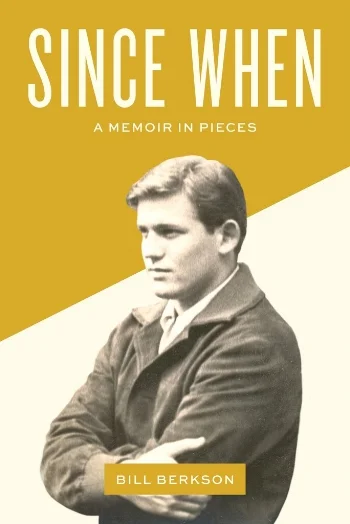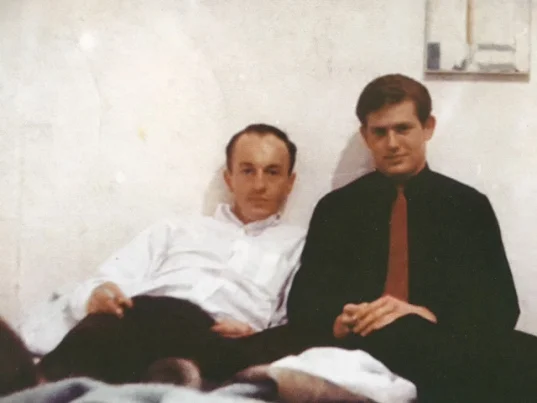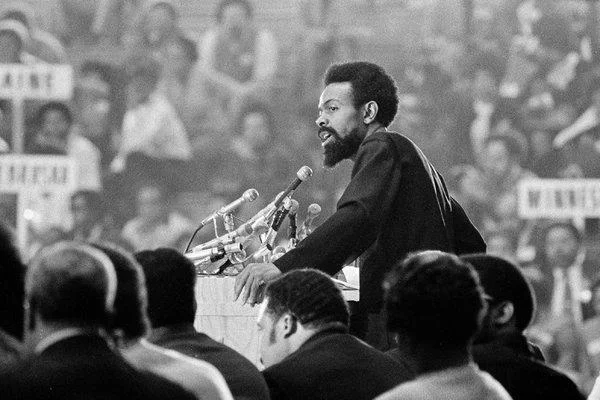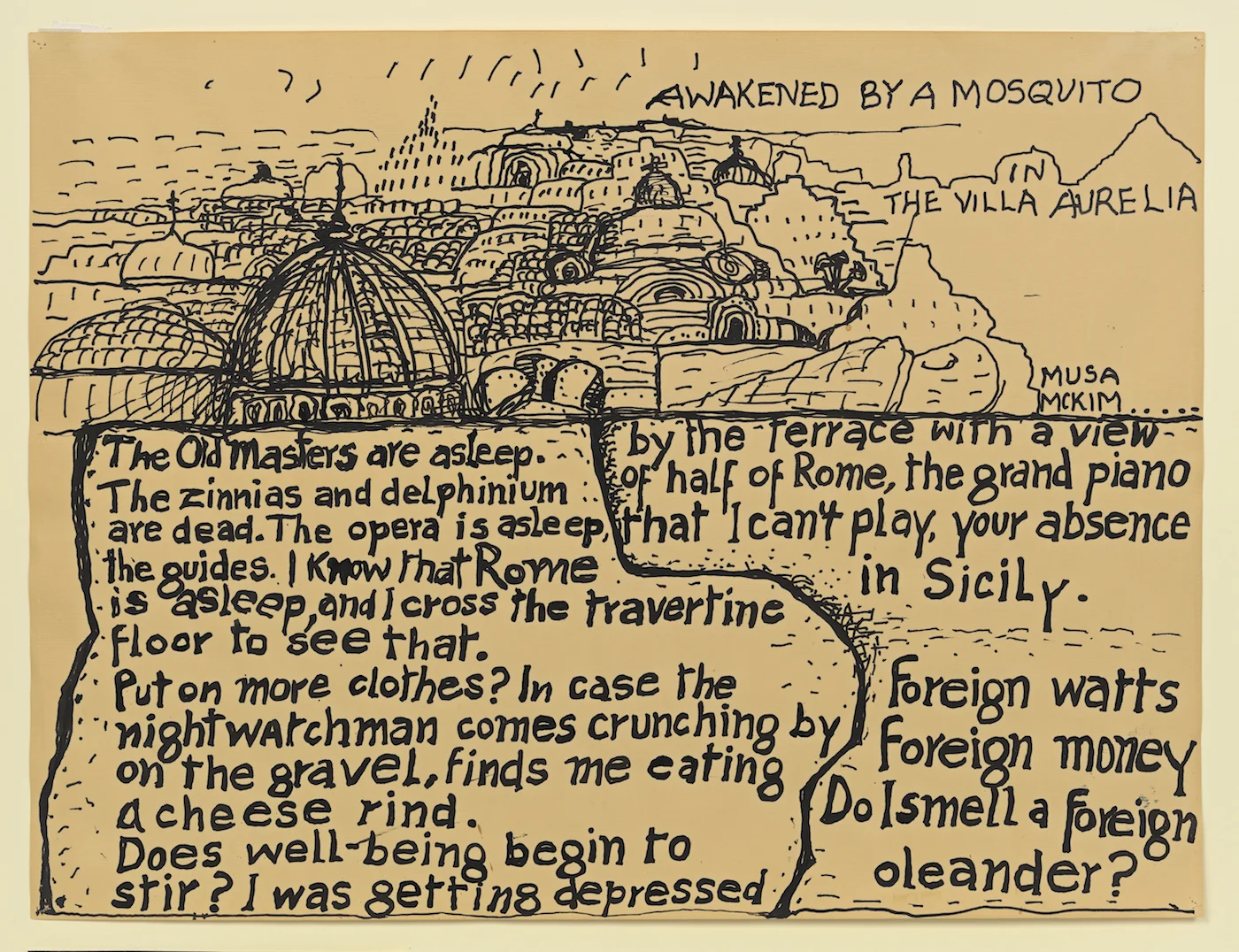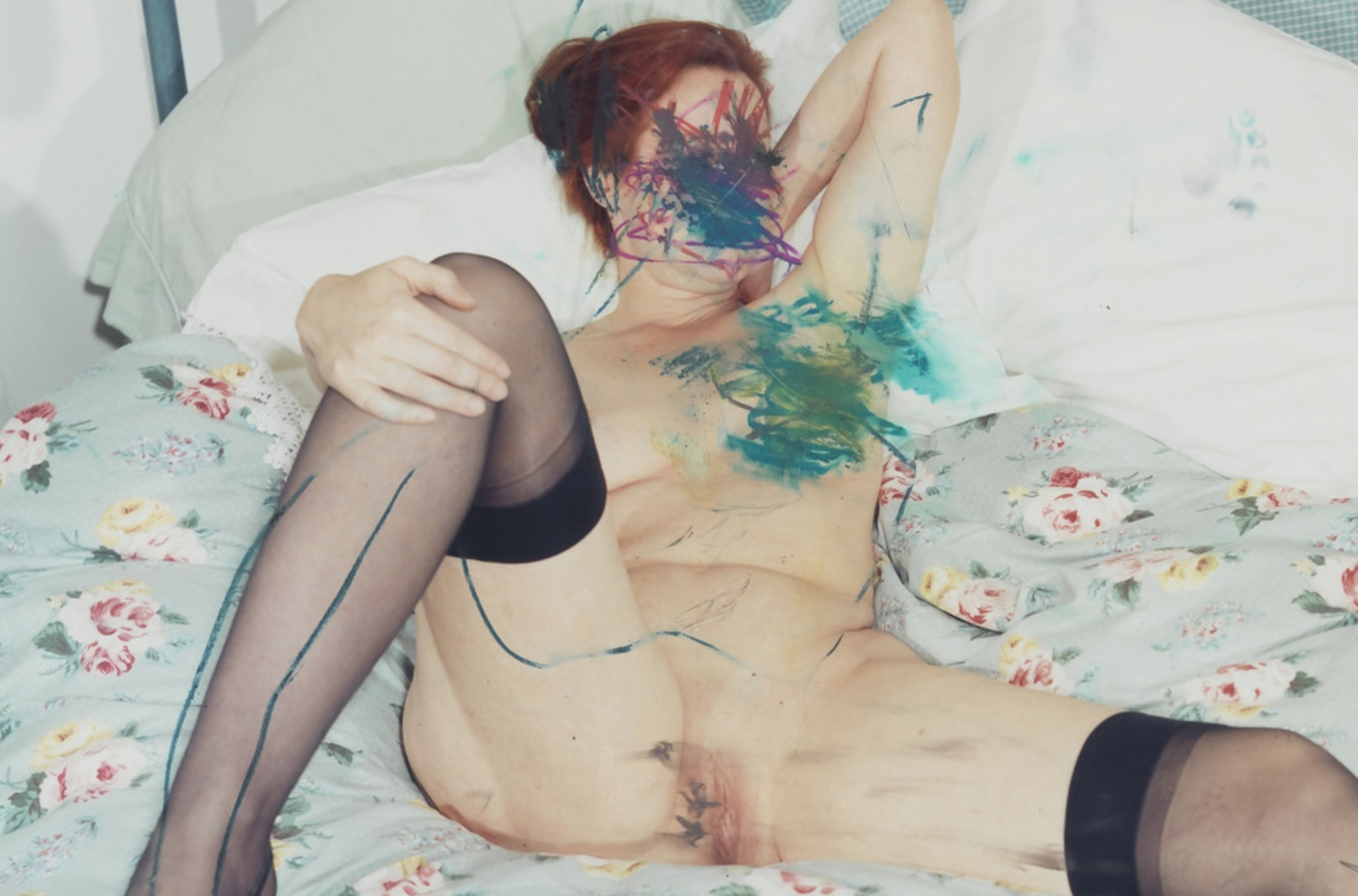Heroes and Humans - Since When by Bill Berkson and Social Practices by Chris Kraus
SINCE WHEN: A MEMOIR IN PIECES by Bill Berkson. November 2018. Coffeehouse Press. 280 pp.
“Always meet your heroes.” That’s the advice the late poet-critic Bill Berkson received from fellow poet Robert Creeley and which he reiterates in his memoir Since When, forthcoming from Coffee House Press. The idea is that meeting your heroes humanizes them. No more pedestals and glamour lighting or conclusions formed from a distance. Behind each ostensibly great artistic personality is a complicated human being with dear and messy personal relationships, or perhaps someone with whom the compatibility just isn’t there. And then there are the individuals who exceed expectations and who, seen in new dimensions, reveal ever fascinating and convoluted expressions of what humans can be. The result of meeting heroes is not necessarily to do away with admiration, but to arrive at a more nuanced conception of a person and to bring art into the personal sphere. One need not be revered as a god to be admired; one need not be perfect to do great things. Responding to a letter from a teenager, Frank O’Hara once wrote in Ingenue Magazine, “It is never in poor taste to admire anyone, except possibly Hitler. It is especially important to admire an artist while he is still alive, so that he may have some pleasure and comfort as a result of his efforts.”
Frank O'Hara and Bill Berkson, 1961
Ostensibly a posthumous memoir, Since When is more of a collection of intimate portraits of Berkson’s artistic companions, many of them his heroes, than a biography, although Berkson implies in this composition that a life lived is indistinguishable from the impacts of individuals upon it. Few details, indeed, can be drawn directly about Berkson himself--namely, where he went to school, his family history, where he lived, and who he was acquainted with. After a brief, fairly dry autobiography, Berkson proceeds into his collection of anecdotes and letters about and to such individuals as Philip Guston, the de Koonings, Frank O’Hara, and John Cage--it’s more or less a Who’s Who list of the New York School and its associates. There’s an undertone to the thing, less along the lines of bragging and more of an implication that anyone can have such encounters, that great artists are not many steps away.
Since When is a sentimental prayer to the great artists Berkson knew, not unlike a bittersweet and light-hearted speech delivered at a memorial service. The qualities of artistic work he describes are as anecdotal as a memorable encounter at a party. For Berkson, artistic greatness, even artistic greatness, is in service of what is intimate and personal. Art is not necessarily a path toward transcendence, but toward connection and engagement. “All the arts, poetry included, involve a great deal of collaboration: poetry collaborates with other poetry, with language, with experience, cognition, general culture,” Berkson writes in his ode to Frank O’Hara. When musing on Joe Brainard, he goes on to add, “Poets and painters collaborate partly for the same reasons that painters make portraits of people they know--it’s another way of spending time with that person, and the artistic aspect lends an extra, more surreptitious, intensity to the get-together.” It is difficult to read Since When and not slip into a longing for connection or a deep appreciation for one’s own friends. Be it the rose-tinted frames of nostalgia or the consequences of technological estrangement, but I often catch myself dreaming of collaborations--it is, in fact, one of the reasons why I personally have been driven towards criticism and ekphrasis as forms of artistic expression.
Amiri Baraka at the National Black Political Convention, 1972. Gary Settle/The New York Times.
In his own way, Berkson seems to address the issue of art vs. artist, that tried question regarding whether a work of art can be judged in isolation from the actions of the artist. It is a question which often measures the merits of both the artist and the artist’s work largely on the basis of their moral contributions. Yet Berkson does not seem to factor the moral qualities of either the artist or the artist’s work in expressing his admiration, quibbles, and appreciation. Even in speaking of Amiri Baraka, Berkson grants only a few sentences to Baraka’s Marxist-Leninist-Maoist radicalism and acknowledges his own petit bourgeois trepidations. The political tenor of Baraka’s work is anecdotal--Berkson gives much more attention to his use of tone and the tension in his friendships. This is not to say that Berkson disregards morality--in his focus on relationships as precedent to (but not necessarily inextricable from) art and politics, he asserts his own ethos, one which ultimately values enrichment achieved through interpersonal experiences. Art, for its part, is simply a potent tool through which humans can explore themselves and each other.
Philip Guston, "Awakened by a Mosquito", circa 1972-1975, collaborative poem-picture with wife Musa McKim, ink on paper. Photo by Genevieve Hanson.
Ever tactfully (and many of his friends and family did refer to him as gentlemanly), Berkson side-steps the art-artist problem. This is not a text which either holds the artist to be distinct from their work or which dips its toes into whether or not a platform should be granted to the work of the artist-gone-bad. He subverts the paradigm of the artist as servile to artistic goals, be they to create masterpieces or achieve social change, toward that in which our artistic creations build upon and contribute toward how we give attention to those around us. Yet who today can touch music, comedy, or literature without stepping into an argument about the separation of artistic work from an artist’s behavior (if it may even be called behavior, but to call it personality or ethical code seems like opening up a can of Kantian worms that I’m not sure I’m prepared to deal with)? When art becomes involved in power structures, such an approach to the artist’s relationship to art as that may be drawn from Berkson’s final adieus quickly devolves into what may be perceived as doe-eyed optimism.
When art and education are commodities entrenched with the potential for individuals to support themselves under a capitalist framework in which cultural capital can be exchanged for a livelihood, hierarchies of power naturally emerge that become often difficult or impossible to parse from the art itself. Artists begin to view platforms for sharing their work as finite and covetable--they become concerned with what works are allowed into The Canon, which individuals deserve to have their art seen, and where power aggregates at the detriment of others. Art, being one of the most accessible forums for change for the disenfranchised artist, confronts these structures of power and acquires an association as a weapon, in addition to (or often at the expense of) its interpersonal value. Its weapon-quality obtains its own cultural capital, often in spite of the systems it seeks to subvert, and a system is established in which art quivers between its means of personal enrichment, its value as a tradable good, and its effectivity as a weapon.
It is not, therefore, difficult to imagine how quickly morality and social responsibility becomes intermingled with art. It’s funny--taste and ethics are not so different; both are enormously difficult to define, both can be loosely agreed upon by a society, and the edges of both waver through time and place. Art, too, has a tendency to resist the designation to particular hours and place that alternative forms of labor (whether art is labor I am not entirely sure). Art drifts from the hours of silent reverie into the night, swirling around those who engage with it into their social spheres and bedrooms. That is to say, the line between art and the rest of life is often, increasingly so, unclear. When a cultural ethos, as often emerges in artistic communities, is concerned with subverting power structures, and art is one of the most accessible weapons available to do so, imperatives are often demanded to shift cultural capital toward art which is weaponized in order to subvert existing power structures. Occasionally, an individual can accumulate sufficient power on the basis of a subversive aesthetics and ideology that they occupy a de facto position of authority within the same power structures they once endeavored to subvert.
SOCIAL PRACTICES by Chris Kraus. 23 October 2018. $17.95. Semiotext(e). 296 pp.
Enter Chris Kraus and her collection of essays Social Practices, forthcoming from Semiotext(e), the independent publisher which Kraus co-edits alongside Hedi El-Kholti and Sylvère Lotringer, some of my own personal heroes who were formative in my ideological development. Social Practices is comprised largely of previously published commissioned pieces which Kraus wrote over the last thirteen years, and which are less of a critique and more of a social engagement with the artists and the themes of the work. In particular, Social Practices is concerned with art which encompasses fields traditionally outside the umbrella of what may be considered to be “fine art”, including activism, journalism, community organizing, etc.--areas which increasingly receive cultural capital in the form of credentials, are often weaponized against power structures (if not itself), and to which social obligations seem inextricable. Although not espoused as a memoir, Social Practices is structurally very similar to Berkson’s Since When, cobbled together through fragments that form a cohesive thematic structure and color a certain time and place in the life of an individual with highly personal relationships to art and artists. Berkson uses his ostensible memoir as an outlet for some final artistic collaborations, asserting that the focus of his life was not himself, but the people around him. Kraus swims in the opposite direction; she flips the platform of art writing in on herself, centering herself in a way that reads like memoir, tending toward self-consciousness and self-righteousness, attributes I recognize primarily because I possess them to such a great degree. For all her concerns with herself, she does seem to be generally self-aware, going so far as to portray herself as a kind of Dostoevskyan underground man in her writing concerning the artist Levka Kavaja-Popescu, who commissioned Kraus to write a review of an exhibition to be shown solely to Kraus and in which Kraus writes a version of herself who she frames as dismissive and disappointing. I wish I were writing this to advocate for Berkson’s simple, noble kindness; I wish I were not writing to immolate myself within my own self-conscious flames.
Recently, Chris Kraus (along with a smattering of other high-profile feminists and theorists) came under ire after publishing a blog post in defense of Avital Ronell, an NYU professor of German and Comparative Literature, against sexual harassment allegations concerning Ronell’s misconduct towards one of her graduate student advisees. It is a case in which Ronell, in spite of womanhood, queerness, and other identifiers typically associated with marginalizations and subversion, arrived at a position of sufficient power within academia to the point where she was capable of wielding it abusively. Chris Kraus stated in her blog post concerned with the allegations, “The New York Times article [“What Happens to #MeToo When a Feminist is Accused?”] stirred the most virulent anti-intellectual, anti-artistic sentiment, which people are always eager for an opportunity to display.” While I personally believe that a fair amount of skepticism regarding intellectualism and art is healthy, particularly when power structures are concerned (and, as discussed previously, under a capitalist framework they are nearly always concerned), I am unsure of which instances of “anti-intellectual, anti-artistic sentiment” Kraus is referring to, outside of the gut reactions and polarized brevity inherent to twitter as a medium.
Detail of Orion by Leigh Ledare, 2014, Oilstick and ink on c-print, Mitchell-Innes & Nash.
Were I to play armchair therapist (and I shall), I would propose (and I shall) that this is not about Avital Ronell in the least. Reading Kraus’s writing, I often find myself frustrated with Kraus--I quickly recognize that the attributes that I tend to find irritating are traits I share with her, not in the least our tendency to project our own insecurities onto others (this is where I might insist, under scrutiny, that this review is comedic). When I read Kraus repeatedly referencing her own work and personal history when writing about the work of others, I am reminded of my frequent shortcomings in conversations, in which I fail to listen and give proper attention to the person I’m speaking to. Kraus is individual who is enormously well-informed on theory surrounding capital, simulacra, spectacles, and social structures--Semiotext(e) itself introduced a large mass of contemporary French theory on these subjects to the United States. When I read Kraus, I read someone who is aware of how positions of power function and the roles which she occupies within them (as a well-known writer, a landlord, an editor, etc.), but who perhaps fears her own indictment, which may prompt her to says such things as, “There’s a paragraph in Renata Adler’s novel Pitch Dark where she says that whenever two people talk, one is always the doctor, the other the patient. But the “doctor” role isn’t necessarily exploitative.” This said to the photographer Leigh Ledare, known for his erotic photographs taken of his mother, in an interview originally published to BOMB Magazine. I can’t say I disagree with the statement, and certainly do not equate egalitarianism with the absence of mentorship, but I wonder for myself if I take comfort in such paternalist stances on privilege, and I think that I often do. “I think the ethics revolve more around consciousness, how the imbalance is used--,” she continues. Ledare responds, “I’d add that posing contradictions through art functions as something like an immune system--it sounds an alarm and acts as a catalyst for consciousness. It seems necessary to self-implicate in order to ask certain questions.”
Where ethics are involved, it is often a consequence of extreme philosophical thought games that we demand of ourselves adherence to a strict ethos with implications in conflict with social codes and our own gut, illogical consciouses. Reality is more complex than a thought game, we find ourselves saying. We ask for nuance, a quality which isn’t well suited to the limited attention spans often developed through our current modes of communication. Although I began to write these reviews out of a love for engagement, to honor the work of others and develop myself and give proper attention and color to my thoughts concerning the work under my gaze, there is also a part of me that is so afraid of being known for a Bad Take that I prefer to hide behind a wall of clouded self-arguing. There is a difference between making space for complexity, and ignoring what is obvious--it seems that the very idea of complexity is complex. That self-conscious portion of myself wonders if I seek out complexity and nuance to avoid personal accountability, to avoid most of all the prospect of being wrong. The way Kraus writes her blog post concerning Ronell is so condemning and simple, allowing little breath for empathy herself. Such an artifact as Kraus’s blog post would not be out of place if it were included in Social Practices as an example of self-implication, in fact. Conspiratorial wishful thinking perhaps, but it would not be out of character.
Regarding the advice given to Bill Berkson, to “always meet your heroes”, it seems that their humanization does not so much change who we know our heroes to be, but alters how we allow ourselves to engage with ourselves and our own contradictions. When our heroes slip outside of our own moral code, it is an opportunity to gracefully examine how we violate our own ethos. Just as it would be absurd to ask of others not to love because heartbreak is nearly inevitable, it is just as absurd not to not have heroes because they are nearly inevitably human. Our admirations shape how we view and interact with the world, and ultimately, how we interact with those who shape us.
Katherine Beaman

